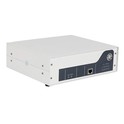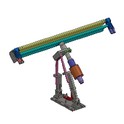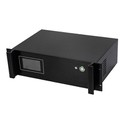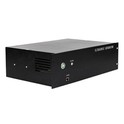Hey there! As a supplier of 6000w ultrasonic generators, I often get asked if these bad boys are easy to repair. Well, let's dive right into it and break down the ins and outs of fixing a 6000w ultrasonic generator.
First off, what's an ultrasonic generator? It's a device that produces high - frequency electrical energy, which is then converted into mechanical vibrations by a transducer. These vibrations are used in a wide range of applications, from industrial cleaning to medical equipment. A 6000w ultrasonic generator is a pretty powerful piece of kit, designed for heavy - duty industrial use.
Complexity of the 6000w Ultrasonic Generator
The 6000w ultrasonic generator is more complex than your average household appliance. It has a lot of components, including power supplies, control circuits, and frequency - adjustment modules. Just think about it like a high - performance car. The more power it has, the more complex the engine and the systems that support it.
One of the main factors that affect the ease of repair is the internal circuitry. With a 6000w generator, the electrical currents are much higher than in lower - wattage models. This means that the components need to be able to handle these high currents without overheating or failing. High - power transistors, for example, are commonly used in these generators. If one of these transistors fails, it can be a bit of a headache to replace. They're not just standard off - the - shelf parts, and you need to make sure you get the right specifications to match the original.
Comparing with Lower - Wattage Ultrasonic Generators
Let's compare it with some lower - wattage models. For instance, a 500W Ultrasonic Generator is much simpler. It has fewer components and lower electrical currents. If something goes wrong with a 500w generator, the chances are that it's a relatively minor issue, like a blown fuse or a loose connection. You can often fix these problems with basic tools and a bit of know - how.
Similarly, a 1000W Ultrasonic Generator is also more straightforward to repair compared to a 6000w one. The control circuits and power supplies in these lower - wattage models are less complex. You can usually find replacement parts more easily, and the repair process doesn't require as much technical expertise.
Even a 4000W Ultrasonic Generator is a bit easier to deal with than a 6000w unit. Although it's still a high - power device, the component stress isn't as extreme as in a 6000w generator.
Tools and Skills Required for Repair
To repair a 6000w ultrasonic generator, you need some specialized tools. A multimeter is a must - have. It helps you measure voltage, current, and resistance, so you can diagnose electrical problems. You'll also need a soldering iron for replacing components on the circuit board. And if you're dealing with high - power components, a heat gun might be necessary to remove and install them properly.
In terms of skills, you need to have a good understanding of electrical circuits. You should know how to read circuit diagrams and be able to troubleshoot based on the symptoms the generator is showing. For example, if the generator isn't producing the right frequency, you need to be able to trace the problem back to the frequency - control circuit.
Availability of Parts
Another important factor is the availability of parts. With a 6000w ultrasonic generator, some of the components are custom - made for high - power applications. This means that they might not be readily available in local electronics stores. You may have to order them from the manufacturer or a specialized supplier. And sometimes, there can be long lead times for these parts, which can delay the repair process.
Manufacturer Support
As a supplier, I can tell you that manufacturer support plays a big role in the repair process. If you buy a 6000w ultrasonic generator from a reputable supplier, they usually offer technical support. They can help you diagnose problems over the phone or even provide repair guides. Some manufacturers also offer on - site repair services, which can be a huge relief if you're in a tight spot.


Preventive Maintenance
The best way to avoid major repairs is through preventive maintenance. Regularly check the generator for any signs of wear and tear. Clean the components to prevent dust and debris from building up, which can cause overheating. Make sure the cooling fans are working properly, as overheating is one of the main causes of component failure in high - power generators.
Conclusion
So, is a 6000w ultrasonic generator easy to repair? Well, it's not as easy as fixing a lower - wattage model. It's more complex, requires specialized tools and skills, and the parts can be harder to come by. But with the right support from the manufacturer and a bit of knowledge, it's definitely possible to repair.
If you're in the market for an ultrasonic generator, whether it's a 6000w one or a lower - wattage model, feel free to reach out to us. We can provide you with all the information you need, including details about repair and maintenance. Let's have a chat and see how we can meet your ultrasonic - generator needs.
References
- "Ultrasonic Technology Handbook" - A comprehensive guide on ultrasonic devices and their repair.
- Industry reports on high - power ultrasonic generator technology and trends.






